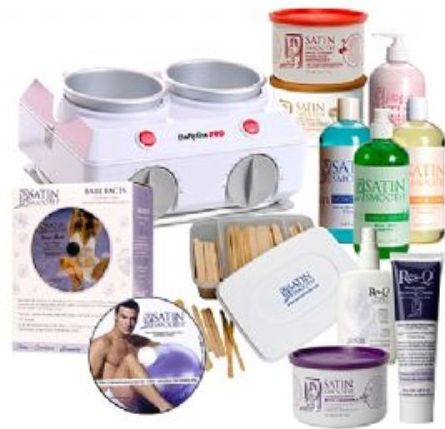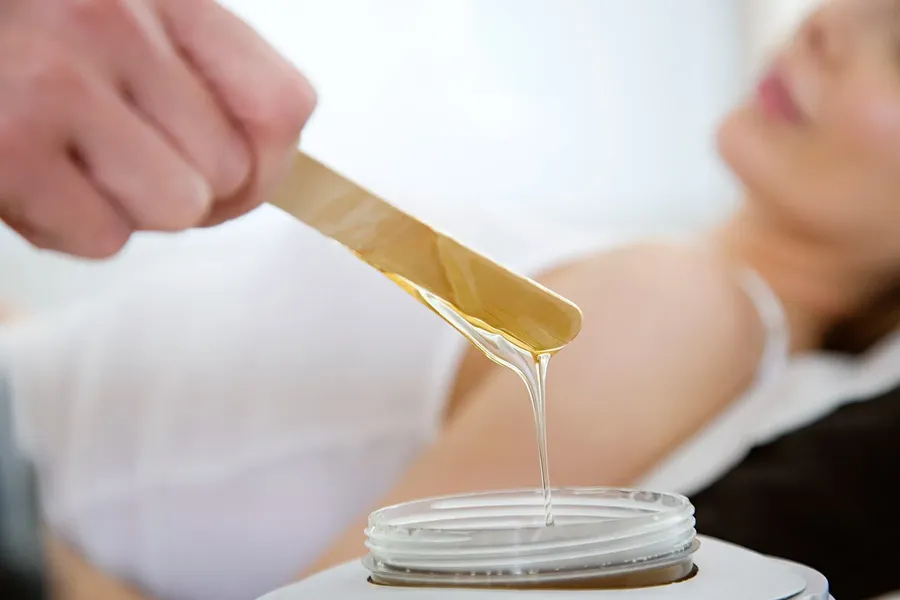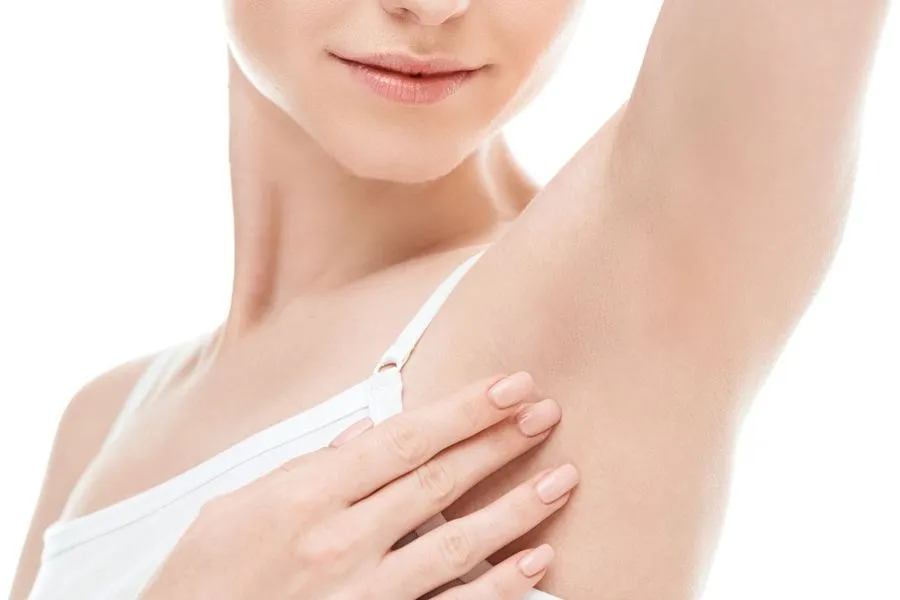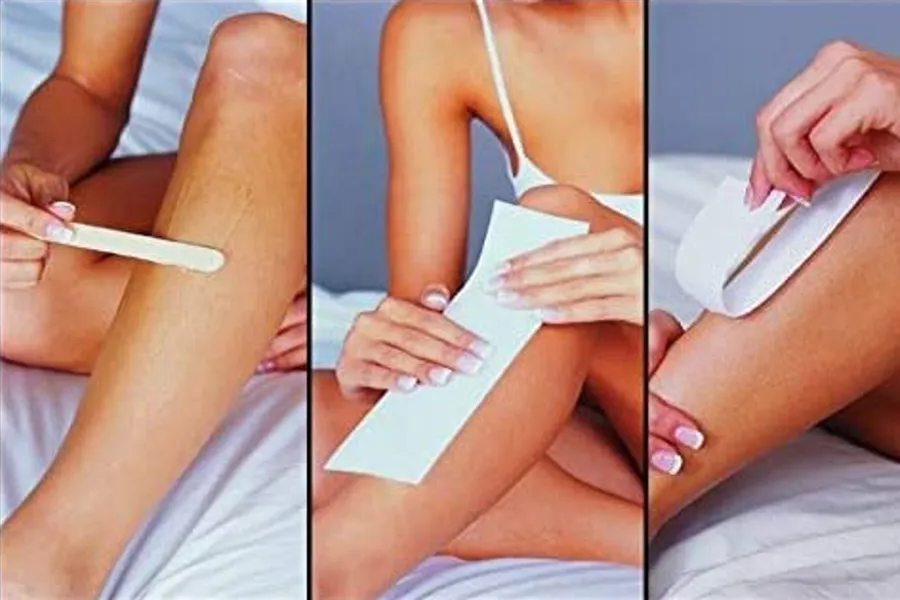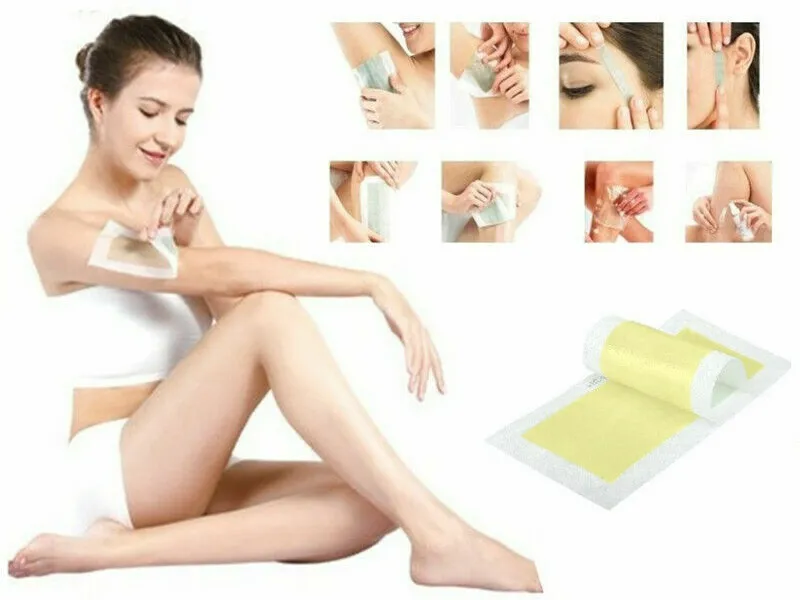When you’re exploring the world of hair removal, understanding the different types of wax available can make the difference between a painful, ineffective experience and achieving salon-quality results at home. With numerous wax formulations on the market today, each designed for specific hair types, skin sensitivities, and body areas, choosing the right type can feel overwhelming.
The main types of wax for hair removal include soft wax (strip wax), hard wax (stripless wax), sugar wax, wax strips, and specialty waxes like chocolate or honey-based formulations. Each type offers unique benefits for different hair removal needs, from sensitive facial areas to large body zones.
Whether you’re a complete beginner wondering about the basics of wax hair removal or an experienced user looking to optimize your routine, this comprehensive guide will help you understand each wax type’s characteristics, applications, and ideal use cases. We’ll explore everything from the gentlest options for sensitive skin to the most effective choices for coarse, stubborn hair.
Understanding Wax Hair Removal Fundamentals
Before diving into specific wax types, it’s essential to understand how wax hair removal works at a fundamental level. All waxes operate on the same basic principle: they adhere to hair shafts and, when removed quickly, pull the entire hair from the follicle including the root. This process differs significantly from shaving methods, which only cut hair at the surface level.
The key differences between wax types lie in their composition, application temperature, removal method, and the specific hair and skin types they’re designed to address. Understanding these distinctions will help you make informed decisions about which wax type suits your particular needs and preferences.
The effectiveness of any wax type depends on proper application technique, hair length (ideally 1/4 to 1/2 inch), and skin preparation. When choosing the right hair removal method for your lifestyle, waxing offers longer-lasting results than temporary methods while being more accessible than permanent solutions like laser treatments.
Soft Wax (Strip Wax): The Traditional Favorite
What is Soft Wax?
Soft wax, also known as strip wax, is the most commonly used wax type in both professional salons and home settings. This wax maintains a honey-like consistency when heated and requires cloth or paper strips for removal. The wax is applied in a thin layer over the hair, covered with a strip, and then quickly pulled off in the opposite direction of hair growth.
The primary advantage of soft wax lies in its ability to grip both hair and dead skin cells, providing gentle exfoliation along with hair removal. This dual action makes it particularly effective for removing fine facial hair and covering large body areas efficiently.
Best Applications for Soft Wax
Soft wax excels in several key areas:
Large Body Areas: Perfect for legs, arms, and back due to its ability to cover extensive areas quickly. Many people find soft wax ideal for full body hair removal sessions because of its efficiency.
Fine to Medium Hair: Works exceptionally well on hair that isn’t too coarse or thick, making it suitable for most body hair types.
Quick Sessions: When you need to remove hair from multiple areas efficiently, soft wax’s speed of application makes it the preferred choice.
Budget-Conscious Users: Generally more economical than hard wax, especially for regular use on large areas.
Soft Wax Formulations and Ingredients
Modern soft waxes come in various formulations designed for different skin types and preferences:
Rosin-Based Waxes: Traditional formulation that provides excellent grip but may cause reactions in sensitive individuals.
Natural Waxes: Made with ingredients like beeswax and plant-based resins, ideal for those preferring natural hair removal methods.
Sensitive Skin Formulas: Include soothing ingredients like aloe vera, chamomile, or vitamin E to minimize irritation.
Titanium Dioxide Waxes: Offer protection for sensitive skin and are often recommended for delicate areas.
Professional Tips for Soft Wax Success
To achieve optimal results with soft wax, temperature control is crucial. The wax should be warm enough to spread easily but not so hot that it burns the skin. Most quality home waxing kits include temperature guides to help you achieve the perfect consistency.
Apply soft wax in the direction of hair growth using smooth, even strokes. The layer should be thin enough to see through but thick enough to grip the hair effectively. When removing strips, pull quickly and decisively while keeping the skin taut with your free hand.
| Soft Wax Feature | Benefits | Best For | Considerations |
|---|---|---|---|
| Strip Required | Easy removal, consistent results | Beginners, large areas | Additional supply needed |
| Covers Large Areas | Time-efficient application | Legs, arms, back | May be wasteful for small areas |
| Exfoliating Action | Removes dead skin cells | All skin types | May irritate very sensitive skin |
| Lower Temperature | Reduced burn risk | Heat-sensitive users | May require multiple applications |
Hard Wax (Stripless Wax): The Gentle Giant
Understanding Hard Wax Technology
Hard wax represents a significant advancement in hair removal technology, offering a gentler alternative to traditional soft wax. Unlike soft wax, hard wax doesn’t require strips for removal – it hardens as it cools and can be removed by gripping one end and pulling the entire piece off in one motion.
The key innovation of hard wax lies in its selective adhesion properties. While soft wax bonds to both hair and skin, hard wax only grips the hair shaft, creating a protective barrier between the wax and your skin. This characteristic makes it significantly less painful and reduces the risk of irritation, especially important when waxing sensitive areas.
Why Hard Wax is Superior for Sensitive Areas
Hard wax has become the gold standard for sensitive areas like the bikini line, underarms, and face because of its unique properties:
Reduced Pain: Since hard wax only adheres to hair and not skin, the removal process is considerably less painful than soft wax.
Multiple Applications: You can apply hard wax multiple times to the same area without causing skin damage, allowing you to catch any missed hairs.
Better for Coarse Hair: The firmer grip of hard wax makes it more effective at removing thick, coarse hair that might break with soft wax.
Ideal Temperature Range: Hard wax works at a slightly higher temperature than soft wax, which helps it penetrate and grip hair more effectively.
For those new to bikini waxing, hard wax offers a more comfortable introduction to intimate area hair removal. Many users find that starting with hard wax builds confidence for future waxing sessions.
Hard Wax Application Techniques
Proper hard wax application requires slightly different techniques than soft wax:
Thickness Matters: Apply hard wax thicker than soft wax – about the thickness of a coin. The wax needs sufficient body to grip itself for removal.
Create a Lip: Leave a thicker edge (called a “lip”) at the end of your wax application. This gives you something to grip when removing the wax.
Timing is Crucial: Allow the wax to cool and harden completely before removal. It should feel firm but not brittle.
Direction Control: Always remove hard wax parallel to the skin, not upward, to minimize discomfort.
Popular Hard Wax Formulations
European Hard Wax: Often made with high-quality resins and essential oils, providing superior grip and pleasant aromatherapy benefits.
Brazilian Hard Wax: Specifically formulated for intimate areas, typically includes soothing ingredients like titanium dioxide and aloe vera. The GiGi Brazilian Body Hard Wax is a popular choice among both professionals and home users.
Sensitive Skin Hard Wax: Features hypoallergenic formulations with additional calming ingredients for those prone to reactions.
Wax Beans: Professional-grade hard wax that comes in small pellets, allowing for precise portion control and consistent melting. Ajoura Wax Beans offer salon-quality results for home use.
Sugar Wax: The Ancient Natural Alternative
The History and Science of Sugaring
Sugar wax, also known as sugaring, represents one of the oldest hair removal methods, dating back to ancient Egypt and Mesopotamia. This natural alternative consists primarily of sugar, water, and lemon juice, creating a paste that’s completely biodegradable and hypoallergenic.
The science behind sugar wax differs from traditional waxes in several key ways. Sugar paste is applied against the direction of hair growth and removed in the direction of growth – the opposite of conventional waxing. This technique reduces hair breakage and minimizes ingrown hairs, making it an excellent choice for those who struggle with post-waxing skin issues.
When comparing sugaring vs traditional waxing, many users find sugaring gentler on sensitive skin while being equally effective at hair removal.
Benefits of Sugar Wax
100% Natural: Made from simple, food-grade ingredients that are safe even if accidentally ingested.
Water-Soluble: Easy cleanup with just warm water – no special solvents or oils needed.
Lower Temperature: Applied at body temperature, eliminating the risk of burns.
Exfoliating Properties: Removes dead skin cells without stripping healthy skin.
Eco-Friendly: Completely biodegradable with minimal environmental impact.
Less Painful: Many users report reduced discomfort compared to traditional waxing methods.
Sugar Wax Application Methods
Sugar wax can be applied using two primary techniques:
Hand Method: The paste is applied and removed using only hands, allowing for maximum control and precision. This method requires practice but offers superior results for experienced users.
Strip Method: Similar to soft wax, sugar paste is applied and removed using cloth strips. This method is more familiar to traditional waxing users and easier for beginners.
Making vs. Buying Sugar Wax
While you can make sugar wax at home using simple ingredients, commercial formulations often provide more consistent results. High-quality products like Veet Sugar Wax Strips offer the convenience of pre-made sugar wax in an easy-to-use strip format.
DIY Sugar Wax Recipe:
- 2 cups granulated sugar
- 1/4 cup water
- 1/4 cup fresh lemon juice
- Optional: 1 tablespoon honey for additional skin benefits
Commercial Advantages:
- Consistent texture and performance
- Professional-grade ingredients
- Extended shelf life
- No preparation time required
Ready-to-Use Wax Strips: Convenience Redefined
The Evolution of Wax Strips
Ready-to-use wax strips have revolutionized home hair removal by eliminating the need for heating and mess associated with traditional waxing. These pre-coated strips come ready to use and only require warming between your hands before application.
Modern wax strips have evolved significantly from their early versions, now featuring advanced adhesive formulations that rival salon treatments. For those following a beginner’s guide to waxing, strips offer an ideal introduction to the world of waxing.
Types of Wax Strips Available
Facial Strips: Smaller, gentler formulations designed specifically for delicate facial hair. These best wax strips for face use milder adhesives suitable for sensitive facial skin.
Body Strips: Larger strips with stronger adhesives designed for coarse body hair on legs, arms, and torso.
Bikini Strips: Specially formulated for intimate areas with gentle yet effective adhesives.
Men’s Strips: Heavy-duty formulations designed to handle coarse male body hair, particularly useful for men’s body waxing.
Advantages of Wax Strips
No Heating Required: Eliminates the risk of burns and the need for special equipment.
Travel-Friendly: Perfect for maintaining your routine while traveling or on-the-go.
Beginner-Friendly: Simple application process with minimal learning curve.
Mess-Free: No cleanup required beyond disposing of used strips.
Portion Control: Each strip provides a predetermined amount of wax, preventing waste.
Consistent Results: Professional formulation ensures reliable performance every time.
Maximizing Wax Strip Effectiveness
To get the best results from wax strips, proper preparation and technique are essential:
Skin Preparation: Ensure skin is clean, dry, and hair is the optimal length (1/4 to 1/2 inch).
Warming Technique: Rub strips vigorously between your hands for 10-15 seconds to activate the adhesive.
Application Pressure: Press firmly and smooth the strip multiple times to ensure good contact with all hairs.
Removal Technique: Pull quickly and decisively in one smooth motion, keeping the strip parallel to the skin.
Specialty Wax Types: Natural and Therapeutic Options
Chocolate Wax: Luxury Meets Function
Chocolate wax combines the effectiveness of traditional waxing with the antioxidant benefits of cocoa. Rich in vitamins A, C, and E, chocolate wax provides skin nourishment during the hair removal process.
Benefits of Chocolate Wax:
- Anti-aging properties from cocoa antioxidants
- Pleasant, relaxing aroma
- Moisturizing effect on skin
- Suitable for sensitive skin types
- Professional spa-like experience at home
Honey Wax: Nature’s Gentle Touch
Honey-based waxes leverage the natural antibacterial and moisturizing properties of honey. This type is particularly beneficial for those with sensitive or acne-prone skin.
Honey Wax Advantages:
- Natural antibacterial properties
- Moisturizing and healing effects
- Gentle on sensitive skin
- Pleasant natural fragrance
- Reduces risk of infections
Fruit Wax: Vitamin-Rich Hair Removal
Fruit waxes incorporate natural fruit extracts and vitamins, providing skin benefits beyond hair removal. Common varieties include strawberry, grape, and mixed berry formulations.
Fruit Wax Benefits:
- High vitamin content for skin health
- Natural fruit acids for gentle exfoliation
- Pleasant, natural fragrances
- Antioxidant protection
- Suitable for all skin types
Comparing Wax Types: Making the Right Choice
| Wax Type | Pain Level | Skill Required | Best Body Areas | Cost |
|---|---|---|---|---|
| Soft Wax | Medium | Beginner | Large areas, fine hair | Low |
| Hard Wax | Low | Medium | Sensitive areas, coarse hair | Medium |
| Sugar Wax | Low | Advanced | All areas, sensitive skin | Medium |
| Wax Strips | Medium | Beginner | All areas, travel use | High per use |
| Specialty Wax | Low-Medium | Medium | All areas, specific needs | High |
Choosing the Right Wax Type for Your Needs
For Beginners
If you’re new to waxing, start with soft wax strips or a comprehensive waxing kit for beginners. These options provide the easiest introduction to waxing with minimal risk of mistakes.
Recommended beginner products:
- High-quality soft wax strips for practice
- Complete waxing kits with detailed instructions
- Gentle formulations for sensitive skin
- Professional-grade starter kits
For Sensitive Skin
Those with sensitive skin should prioritize gentle formulations and proper technique. Hard wax and sugar wax typically cause less irritation than soft wax.
Sensitive skin considerations:
- Choose hypoallergenic formulations
- Avoid products with artificial fragrances
- Consider natural options like sugar wax
- Always perform patch tests before full application
For Coarse Hair
Thick, coarse hair requires stronger formulations and proper technique. Hard wax generally provides superior results for this hair type.
Coarse hair solutions:
- Professional-grade hard wax
- Higher-temperature applications
- Multiple small sections rather than large areas
- Quality wax beans for consistent results
For Different Body Areas
Facial Hair: Use gentle, specifically formulated facial waxes or small amounts of hard wax designed for sensitive areas.
Bikini Area: Hard wax is the preferred choice for intimate areas due to its gentle nature and effectiveness on coarse hair.
Large Body Areas: Soft wax or strips provide efficient coverage for legs, arms, and back.
Underarms: Hard wax works best due to the sensitive nature of underarm skin and the coarse hair typically found in this area.
Advanced Waxing Techniques and Tips
Temperature Control Mastery
Understanding proper wax temperature is crucial for effective, safe hair removal. Each wax type has its optimal temperature range:
Soft Wax: Should spread like warm honey – fluid but not runny Hard Wax: Slightly warmer than soft wax, should coat hair completely without dripping Sugar Wax: Body temperature or slightly above – should be pliable like taffy
Application Patterns and Techniques
Section Size: Work in small, manageable sections rather than attempting large areas at once. This provides better control and more thorough hair removal.
Hair Growth Direction: Always apply wax in the direction of hair growth for optimal adhesion and effectiveness.
Removal Speed: Quick, decisive removal yields better results and less discomfort than slow, hesitant pulling.
Skin Tension: Keep skin taut during removal to minimize discomfort and ensure complete hair removal.
Troubleshooting Common Issues
Incomplete Hair Removal: Often caused by improper wax temperature, incorrect hair length, or insufficient contact time.
Skin Irritation: Usually results from over-waxing, too-hot wax, or sensitivity to specific ingredients.
Hair Breakage: Typically occurs when removing wax too slowly or when hair is too short for effective gripping.
Ingrown Hairs: Can be minimized through proper exfoliation before and after waxing, and by removing hair in the correct direction.
Professional vs. At-Home Waxing: Making the Decision
When to Choose Professional Services
Professional waxing offers several advantages, particularly for beginners or those waxing difficult-to-reach areas. Experienced aestheticians can provide expertise in wax type selection and application techniques.
Professional advantages:
- Expert technique and experience
- Access to professional-grade products
- Proper sanitation and safety protocols
- Guidance for difficult areas or skin types
Benefits of At-Home Waxing
Home waxing provides convenience, privacy, and long-term cost savings. With proper products and technique, you can achieve professional-quality results in the comfort of your own home.
At-home advantages:
- Privacy and comfort
- Significant cost savings over time
- Convenient scheduling
- Control over products and techniques used
Building Your Home Waxing Kit
Creating an effective home waxing setup requires the right combination of products and tools:
Essential Components:
- Quality wax warmer or heating system
- Multiple wax types for different body areas
- Professional-grade applicators and strips
- Pre and post-wax care products
- Safety equipment and first aid supplies
Recommended starter kit: The Tress Wellness Waxing Kit provides everything needed for comprehensive home waxing, including multiple wax types and professional tools.
Safety Considerations for All Wax Types
Pre-Waxing Safety Checklist
Skin Assessment: Check for cuts, irritation, sunburn, or active breakouts in the area to be waxed.
Medication Review: Certain medications can increase skin sensitivity or affect healing.
Patch Testing: Always test new products on a small, inconspicuous area 24-48 hours before full application.
Hair Length Check: Ensure hair is the optimal length for effective waxing (1/4 to 1/2 inch).
During Waxing Safety
Temperature Testing: Always test wax temperature on a small area before full application.
Hygiene Protocols: Use clean tools and maintain sanitary conditions throughout the process.
Skin Protection: Never apply wax to broken, irritated, or overly sensitive skin.
Time Limits: Don’t exceed recommended application times for any wax type.
Post-Waxing Care
Immediate Care: Apply soothing lotions or aloe vera gel to calm the skin.
Avoidance: Skip hot showers, saunas, or sun exposure for 24 hours after waxing.
Monitoring: Watch for signs of infection, excessive irritation, or allergic reactions.
Maintenance: Begin gentle exfoliation 48 hours after waxing to prevent ingrown hairs.
For comprehensive aftercare guidance, refer to our detailed post-waxing care guide.
The Future of Wax Hair Removal
Emerging Technologies
The wax industry continues to evolve with new formulations and application methods designed to improve comfort and effectiveness.
Innovation Areas:
- Temperature-indicating waxes that change color
- Hybrid formulations combining benefits of different wax types
- Nano-technology for enhanced hair gripping
- Eco-friendly, sustainable formulations
Trend Predictions
Natural Ingredients: Increasing demand for organic, chemical-free formulations Customization: Personalized wax formulations based on individual skin and hair types Technology Integration: Smart heating devices and application tools Sustainability: Biodegradable packaging and environmentally conscious manufacturing
Making Your Wax Type Selection
Decision Framework
When choosing between wax types, consider these key factors:
Experience Level: Begin with user-friendly options and advance to more specialized types as you gain skill.
Skin Sensitivity: Prioritize gentle formulations if you have sensitive or reactive skin.
Hair Type: Match wax strength and type to your specific hair characteristics.
Body Areas: Choose appropriate formulations for each area you plan to wax.
Budget: Balance initial cost with long-term value and effectiveness.
Lifestyle: Consider convenience factors like heating requirements and application time.
Building Your Wax Collection
Rather than committing to a single wax type, many successful home waxers build collections that include:
- Primary wax: Your go-to choice for regular use on large areas
- Specialty wax: Gentle option for sensitive areas or special circumstances
- Convenience option: Strips or ready-to-use products for quick touch-ups
- Natural alternative: Sugar wax or organic formulations for chemical-free sessions
Conclusion: Mastering the Art of Wax Selection
Understanding the different types of wax hair removal available empowers you to make informed decisions that enhance your grooming routine while minimizing discomfort and maximizing results. Whether you choose the efficiency of soft wax, the gentleness of hard wax, the natural benefits of sugar wax, or the convenience of ready-to-use strips, success depends on matching the right product to your specific needs.
The key to waxing success lies not just in choosing the right wax type, but in understanding proper application techniques, maintaining safety protocols, and developing skills through practice. Each wax type offers unique advantages, and many experienced users find that combining different types for different body areas and situations provides the best overall results.
As you begin or continue your waxing journey, remember that technique improves with practice, and what works best for others may not be optimal for your unique situation. Start with beginner-friendly options, prioritize safety, and gradually experiment with different formulations as you gain confidence and experience.
The investment in understanding and mastering different wax types pays dividends in long-term satisfaction, cost savings, and the confidence that comes from achieving smooth, professional-quality results at home. Whether you’re seeking a complete hair removal solution or looking to optimize your current routine, the right wax type selection forms the foundation of successful hair removal.
Ready to explore specific wax products and techniques? Visit our comprehensive waxing guides for detailed reviews and step-by-step instructions. For more information about different hair removal methods and how they compare, check out our complete hair removal guide to find the perfect approach for your lifestyle.
Explore More Waxing Content:


